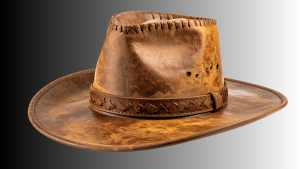Rosita Missoni, co-founder of the eponymous Italian knitwear label Missoni, has died aged 93. The news was confirmed by the president of Italy’s Lombardy region, Attilio Fontana, who per BBC, described her death as “a great loss for Italy, Lombardy and for the province of Varese where she was born and lived”.

Missoni. Image: Facebook page of Missoni
The Missonis settled in Sumirago in northern Italy. There Rosita and Ottavio welcomed their children, grandchildren and great grandchildren. Few know that she was also a porcini mushroom hunter who tended to her kitchen garden and henhouse when they weren’t setting trends in luxury knitwear.
“Rosita Missoni was both a strong and sensitive woman, who together with her husband Ottavio created one of the most beautiful and unique stories of Italian fashion, [defined by] an unmistakable style and an authentic approach, very creative and at the same time rich in great humanity that she was able to convey to the world alongside her beautiful family,” Carlo Capasa, Chairman, Camera Nazionale della Moda Italiana, told WWD.
The legacy of Missoni
Missoni’s story begins with its founders, Ottavio “Tai” Missoni and Rosita Jelmini, who brought their unique backgrounds and shared passion for craftsmanship to the fashion industry. Ottavio, born in 1921 in Dalmatia, grew up in a multicultural environment, excelling in athletics before being drawn to textile innovation after World War II. Meanwhile, Rosita, born in 1931 in Golasecca, grew up surrounded by her family’s shawl and embroidered fabric business, nurturing her eye for detail and quality. Their meeting at the 1948 London Olympics marked the beginning of a partnership that would merge artistry and technical ingenuity, eventually reshaping knitwear fashion.
In 1953, the couple married and established their first workshop in Gallarate, Italy. Ottavio’s experience with knitwear machines and Rosita’s creativity quickly came to fruition. Their initial productions focused on knit training suits, but it was the launch of their colourful and innovative patterns in the late Fifties that set the stage for their breakthrough. By 1958, their Milan store windows displayed the now-iconic Missoni striped dress, marking the arrival of the “Missoni” label as a distinctive fashion brand.

Missoni. Image: Facebook page of Missoni
The Sixties and Seventies were transformative decades for Missoni, as the fashion brand got international acclaim for its innovative use of Rachel knitting machines and unconventional colour combinations. With the support of influential figures like fashion editor Diana Vreeland, the Missonis began showcasing their collections in global fashion hubs. Missoni’s first catwalk show came in 1966, followed by a presentation at the Pitti Palace in Florence the following year, featuring unlined, transparent lamé blouses, which set bold new trends in knitwear. By the Seventies, Missoni had become synonymous with high-fashion knitwear, pioneering the “put-together” look admired worldwide.
Missoni’s rise to prominence continued with accolades and global collaborations. In 1973, the fashion brand received the prestigious Neiman Marcus Fashion Award, further cementing its status as a trailblazer in the fashion industry. Their artistic approach extended beyond apparel; Ottavio’s tapestries were exhibited in museums, and the couple ventured into home furnishings and luxury goods. By the Eighties, Missoni was a symbol of Italian design, combining tradition with innovation.
As Missoni grew into a family-driven empire, its values of craftsmanship, creativity, and cultural authenticity remained intact. The founding of the Ottavio and Rosita Missoni Foundation in 2008 ensured the preservation of their artistic contributions. Today, under the leadership of the next generation, including Angela Missoni, the luxury fashion brand continues to innovate while honouring its heritage. Missoni’s legacy thrives in its kaleidoscopic patterns, boundary-pushing designs, and enduring influence in fashion and art.
Read More:
Jasmeen Dugal is Associate Editor at FashionABC, contributing her insights on fashion, technology, and sustainability. She brings with herself more than two decades of editorial experience, working for national newspapers and luxury magazines in India.
Jasmeen Dugal has worked with exchange4media as a senior writer contributing articles on the country’s advertising and marketing movements, and then with Condenast India as Net Editor where she helmed Vogue India’s official website in terms of design, layout and daily content. Besides this, she is also an entrepreneur running her own luxury portal, Explosivefashion, which highlights the latest in luxury fashion and hospitality.











